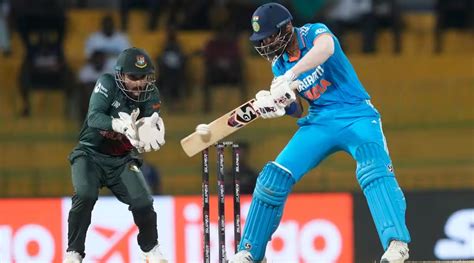Discover the historical roots, cultural impact, and economic significance of cricket, exploring its role in shaping identities and communities worldwide.Exploring The Influence Of Cricket On Global Culture
Cricket, often celebrated as much for its elegant gameplay as for its profound impact on society, transcends mere sport to become a vital part of global culture. Originating in England, the game has woven its way into the fabric of various nations, shaping identities and fostering connections across diverse communities. From its historical roots to its present-day significance, cricket plays a key role in economic development and cultural exchange. As we delve deeper into the multifaceted influence of cricket, we’ll explore how it not only reflects national pride but also inspires artistic expression, music, and fashion around the world. Join us on this journey to discover the rich tapestry that cricket has woven across continents and cultures, bridging gaps and uniting people through shared passion and camaraderie.
Exploring The Historical Roots Of Cricket And Its Global Expansion
The sport of cricket has a rich and complex history, tracing its origins back to 16th-century England. Initially played in rural villages, cricket gradually evolved into a structured sport, capturing the imaginations of local communities. Early records suggest that the game was played by children and later gained popularity among adults, eventually leading to the formation of formal teams and structured competitions.
As the British Empire expanded in the 19th century, so too did cricket. The sport was introduced to various parts of the world—including Australia, India, South Africa, and the Caribbean—by colonizers and military personnel. This led to the establishment of local cricket clubs and the adaptation of the game to suit different cultures and environments. The international matches began to surface, with the first-ever Test match played in 1877 between Australia and England, marking a significant milestone in the sport’s history.
Cricket’s global expansion didn’t just stop with the British Empire. In the 20th century, nations began to embrace the sport, and international governing bodies were formed to regulate and promote cricket at a global level. The formation of the International Cricket Council (ICC) in 1909 was a pivotal moment, setting the stage for international tournaments and furthering the game’s reach.
Today, cricket is played and followed in countries around the world, making it one of the most popular sports globally. Its ability to bring together people from diverse backgrounds and cultures exemplifies how sports can transcend geographical boundaries. The modern era of cricket includes various formats, from Test matches to T20 leagues, catering to a wide audience and showcasing a blend of traditional values and contemporary influences. Thus, Exploring The historical roots of cricket reveals an intricate tapestry of cultural exchange, adaptation, and global unity through sport.
The Role Of Cricket In Shaping National Identities Worldwide
Cricket has transcended its status as merely a sport to become a powerful symbol of national identity in various countries. This phenomenon is particularly evident in nations like India, Pakistan, Australia, and England, where the game serves as a source of pride and unity among its citizens.
In India and Pakistan, cricket is not just a game; it is interwoven with the fabric of national identity. Matches, especially those between these rival nations, evoke passionate responses from the public and play a significant role in fostering a sense of belonging. The cricketing heroes in these countries often reach celebrity status, representing the hopes and aspirations of millions. Exploring The influence of cricket in these contexts reveals how it serves as a unifying force during times of social and political strife.
In Australia, cricket embodies the spirit of the nation. The sport’s heritage is deeply tied to Australian culture, with historical matches serving as milestones in the country’s social narrative. The Ashes series against England, for example, is seen not just as a sporting contest but as a clash of cultures, reinforcing national pride and identity.
Moreover, cricket has played a significant role in the post-colonial identity of many countries. For instance, in the Caribbean, cricket has been a vehicle for expressing sovereignty and cultural pride in the wake of colonialism. This is poignant during international tournaments, where Caribbean nations showcase their unique cultural identities through music, language, and fashion, all while performing on the world stage.
Overall, cricket’s influence on national identities illustrates how sports can resonate with historical, cultural, and social contexts, making it more than just a game but a crucial aspect of a nation’s identity. The sport continues to evolve, inspiring future generations and emphasizing the interconnectedness between cricket and national identity worldwide.
Exploring The Economic Impact Of Cricket On Local Economies
Cricket, often dubbed as a religion in countries like India, Australia, and England, has far-reaching implications on local economies beyond just the sport itself. The industry’s economic footprint can be examined through various dimensions such as job creation, tourism, and infrastructural development.
Exploring The economic impact of cricket starts with the direct employment generated by the sport. From players and coaches to ground staff and administrative roles, numerous job opportunities arise within the cricketing ecosystem. Additionally, the presence of local cricket clubs and academies contributes to grassroots employment.
Moreover, major cricket events, such as the ICC World Cup and regional tournaments, attract extensive tourism. Fans flock from across the globe, leading to increased revenue in sectors like hospitality, transportation, and retail. The influx of tourism can be particularly beneficial for small businesses in host cities, enhancing their economic viability.
| Economic Aspect | Description |
|---|---|
| Job Creation | Employment opportunities for players, staff, and related services. |
| Tourism | Increased visitors and spending in match host cities. |
| Sponsorship and Advertising | Investment by brands leading to economic growth and visibility. |
| Infrastructure Development | Upgrades and construction of stadiums and facilities. |
Furthermore, Exploring The role of cricket-related sponsorships and advertising highlights the significant financial contributions companies make to the sport. As brands seek exposure through cricketing events, they often invest in local economies, driving growth and innovation.
The construction and renovation of stadiums and related infrastructure are another crucial economic aspect. These developments not only provide modern facilities for fans but also enhance local transport and hospitality services, leading to long-term benefits beyond the cricket calendar.
Cricket’s influence on local economies is multifaceted, enhancing job creation, tourism, and infrastructure while promoting community engagement through the sport. The collective impact of cricket serves as a catalyst for economic development in regions where cricket is celebrated.
Cultural Exchange Through Cricket: Bridging Communities And Nations
Cricket is more than just a sport; it is a powerful medium of cultural exchange that fosters connections among diverse communities and nations. With roots tracing back to England, cricket has transcended geographical boundaries, becoming a global phenomenon. Through its various formats, including Test matches, One Day Internationals (ODIs), and T20 leagues, cricket has become a platform where cultures meet and intersect.
The influence of cricket on cultural exchange can be observed in several ways:
- International Tournaments: Events such as the ICC Cricket World Cup and the T20 World Cup gather teams from around the world, celebrating the spirit of competition while highlighting the diversity of cultures. Fans from different nations come together, sharing their traditions and customs, which enriches the overall experience of the game.
- Player Exchanges: Players often move between countries for club cricket or international representation, bringing their unique styles and cultural backgrounds. This fusion of talent not only enhances the quality of the game but also promotes cross-cultural understanding.
- Grassroots Initiatives: Various grassroots organizations leverage cricket as a tool for social integration. Programs aimed at underprivileged communities use the sport to foster dialogue and promote peace, proving that cricket can unite people regardless of their backgrounds.
- Cultural Festivals: Cricket matches are often accompanied by celebrations that showcase local music, dance, and cuisine. This blend of sporting events with cultural festivities creates an atmosphere where nations can proudly display their heritage while coming together as one.
The impact of cricket extends far beyond the boundaries of the playing field. It serves as a bridge, connecting people from various cultures, and promoting understanding and goodwill across nations. As part of the ongoing narrative of global culture, cricket continues to play a significant role in fostering positive relationships through sport.
How Cricket Influences Music, Art, And Fashion Around The World
Cricket’s influence extends well beyond the pitch, permeating various aspects of global culture, particularly music, art, and fashion. As one of the world’s most popular sports, it has inspired countless artists, musicians, and designers, creating a fascinating interplay between the game and creative expressions.
In music, cricket has prompted a plethora of songs and anthems that celebrate the sport’s spirit. From catchy tunes played in stadiums to popular tracks in music charts, cricket-themed songs often invoke a sense of camaraderie and national pride among fans. Notable examples include the World Cup song collaborations that resonate with both cricket enthusiasts and the broader public, showcasing the way sports can unify individuals through rhythmic beats and engaging lyrics.
Art also finds its inspiration from cricket, with many artists portraying the sport in their works. Paintings, sculptures, and street art can frequently be spotted in areas where cricket holds a cultural significance, reflecting local narratives and capturing the drama of match days. Exhibitions dedicated to cricket illustrate how the game serves as a canvas for cultural storytelling, allowing artists to express their views on the game and its place in society.
Furthermore, cricket influences fashion as well. The iconic cricket uniform has been reimagined in numerous ways, from high-fashion pieces on runways to streetwear inspired by cricket clubs. Designers often draw from the aesthetics of the sport, infusing traditional elements like stripes and collars into their collections. This fusion showcases cricket’s identity as more than just a sport; it has transformed into a fashion statement embraced by people worldwide.
exploring the diverse ways cricket impacts music, art, and fashion reveals the sport’s profound cultural relevance. As it continues to evolve, so too will the influences it leaves on these creative fields, fostering connections across borders and backgrounds through shared appreciation of the game.
Frequently Asked Questions
What is the primary focus of the blog post?
The post explores how cricket has influenced global culture across various regions and communities.
How has cricket impacted social interactions in different countries?
Cricket has served as a common ground for social interactions, fostering community bonding and cultural exchange among diverse groups.
In what ways has cricket contributed to national identity?
Cricket has played a significant role in shaping national identities, often becoming a source of pride and unity for countries, especially in regions like South Asia and the Caribbean.
Can the influence of cricket be seen in the arts and media?
Yes, cricket has inspired numerous works of literature, film, and music, illustrating its deep-rooted presence in popular culture.
What role do cricket players play in promoting cultural values?
Cricket players often become cultural icons, promoting values such as teamwork, sportsmanship, and resilience, which resonate with fans globally.
How has cricket’s global reach changed over the years?
The advent of televised matches and global tournaments has expanded cricket’s reach, allowing it to gain popularity in non-traditional cricketing nations.
What are some examples of cricket fostering international relations?
Cricketing events, such as the Cricket World Cup, often serve as a platform for diplomatic relations, bringing together nations and promoting goodwill through sport.









